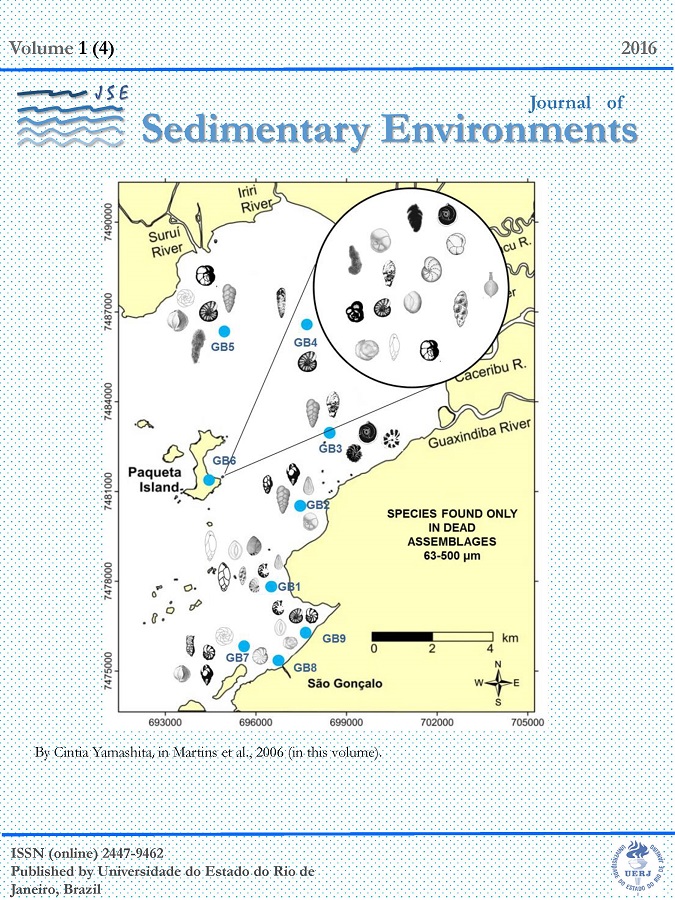GEOCHEMICAL AND MINERALOGICAL FINGERPRINTS OF THE SEDIMENTS SUPPLY AND EARLY DIAGENETIC PROCESSES IN THE BIZERTE LAGOON (TUNISIA)
DOI:
https://doi.org/10.12957/jse.2016.26881Keywords:
Mediterranean coastal lagoon, allochthonous sediments, autochthonous sediments, circulation, multiproxy approach, Bizerte LagoonAbstract
The Bizerte Lagoon (Tunisia) functions as a sedimentation environment characterized by receiving allochthonous sediments mainly transported by the Ben Hassine, Rharek and Guenich streams, as well as marine sediments from the Mediterranean Sea. It is subjected to significant environmental changes due to the natural and anthropic influences altering the natural patterns of circulation, extraction and/or deposition of mineralogical materials. The aims of this investigation is to analyze the sediments supply and early diagenetic processes in Bizerte Lagoon. The phyicochemical parameter of the sediment pore water, as well as their texture, mineralogical composition (X-Ray diffraction technique - XRD), magnetic susceptibility and their geochemical composition (namely lithogenic and biogenic chemical elements analyzed by ICP-MS) were analyzed in 10 sampling stations. The water temperature with an average of 15.2°C was stable in the study area. The sediments were generally characterized by fine granulometry, mainly mud and sandy mud, poorly to very poorly sorted, and constituted by two or more granulometric particle modes. The mineralogical results revealed the presence of phyllosilicates, quartz, pyrite, calcite, anatase and K-feldspar, and other minerals in smaller proportions. The fine sediment and high phyllosilicates and Al contents indicate the presence of weak currents in most part of the studied area. The results of sorting, skewness and kurtosis suggest that the currents are more active in the northern region of the lagoon, near the channel of communication with the Mediterranean Sea. They also evidence a coarser particles contribution of the Ben Hassine stream to the lagoon. The other streams seem to introduce mostly fine grained sediments in the lagoon. The currents circulation, the water residence time and the biological productivity influence the mineralogical and geochemical characteristics of the bottom sediments. The industrial activity is also an important factor, since it results in the accumulation of high levels of some metals, such as Fe. Metals are mostly retained in the sediment in areas with active biogeochemical activity due to high organic matter accumulation. Mineralogical and geochemical patterns indicate contributions from different rocks sources, diverse processes of transport and deposition of sediments and varied processes of production of autochthonous materials.
Published
Issue
Section
License

Journal of Sedimentary Environments (JSE) is licensed under a Creative Commons Attribution-Noncommercial-Share Alike 4.0 International License.

